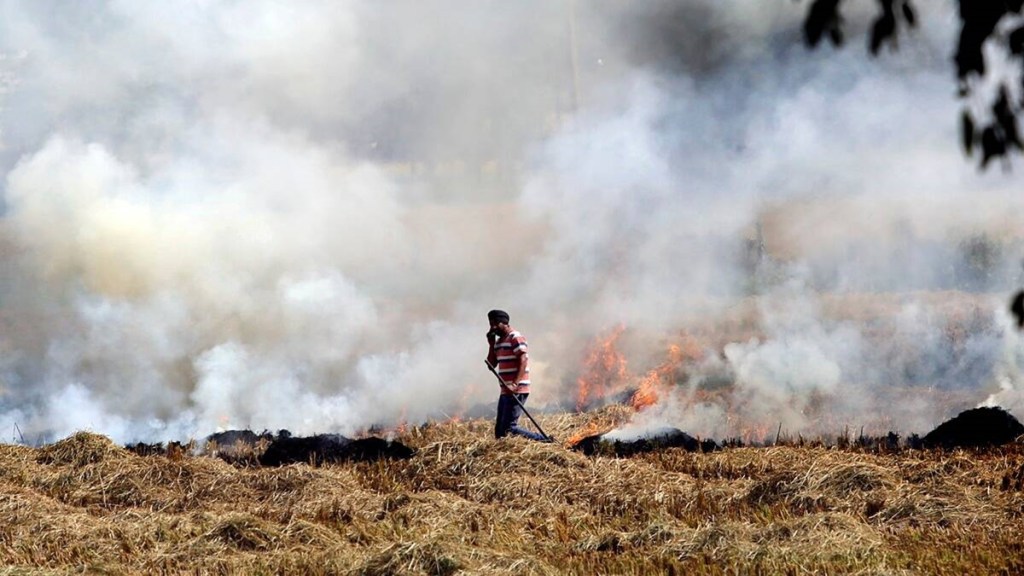Punjab and Haryana, which contribute significantly to stubble burning incidents in the northern region, have drawn up plans to eliminate the practice by farmers over the next two to three years.
State government officials said that through combination of measures including promotion of crop residue management in the soil, financial incentives to farmers, setting up biomass power plants to use the stubble and crop diversification from paddy to other less water intensive crops such as cotton, oilseeds and pulses, the annual stubble burning after harvesting of paddy would be curbed.
During September 15-November 14, 2022, Punjab reported a 30% decline in stubble burning events at 45,323 compared to previous year, as per data by the Consortium of Research on Agroecosystem Monitoring and Modelling from Space, Indian Agricultural Research Institute, Delhi.
Haryana reported a 44% drop in straw burning incidents at 3128 events during the same period. Two states have contributed 84% of 57,796 stubble burning incidents reported from the northern regions including Madhya Pradesh, Uttar Pradesh and Rajasthan.
Also read: CPI inflation likely to cool off to 6% in 4 months; RBI MPC may raise repo rate by 30-50 bps in Dec meeting
“We will bring down incidents of stubble burning events below 1500 by 2023,” Hardeep Singh, director general, agriculture, Haryana, told FE. He said paddy stubble burning, which causes air pollution as well as reduces soil nutrients, will be completely stopped by 2024.
Haryana government has initiated measures such as financial assistance of `7000/acre for crop diversification from paddy to other crops, `1000/acre for crop residue management and utilisation of paddy stubble for industrial use such as broilers, paper board and power plants.
“We provide 50% subsidy on equipment such as happy seeder and paddy straw choppers for crop residue management to farmers and an 80% subsidy on these equipment at custom hiring centres,” Singh said. More 0.13 million hectare (mh) has been covered under the financial incentives scheme so far.
The focus of the Haryana government has been to curb stubble burning incidents mostly reported from six districts – Fatehabad, Sirsa, Kaithal, Karnal, Kurukshetra and Jind. Out of 3.4 mh under paddy cultivation, stubble burnings are reported from non-basmati rice growing areas of around 1.5 mh.
Gurvinder Singh, Director, Department of Agriculture, Punjab, the state will soon announce a comprehensive crop diversification plan which would include financial incentives to farmers as well as promote use of paddy straw for industrial use. “We will be announcing incentives for the industrial use of stubble especially in power generation,” he said.
Punjab has been giving thrust on the Ludhiana, Sangrur, Patiala and Barnala districts for encouraging farmers against paddy stubble farming through crop diversification.
Also read: GST appellate tribunals likely to be set up by December 2023
The crop diversification would entail financial incentives to farmers, procurement of crops by state agencies at minimum support price rates and incentives for processing facilities. Annually, around 0.1-0.2 mh paddy sown will be shifted to alternate crops such as sugar, vegetables and cotton.
Out of the total 7.8 mh used crop production in Punjab, 40% and 45% used for water intensive rice and wheat cultivation respectively, The Punjab Economic Survey (2021-22) has said cropping system is becoming economically and ecologically unviable given the deterioration of soil health, depletion of water table and squeezing of farm incomes as cost of cultivation increases.


